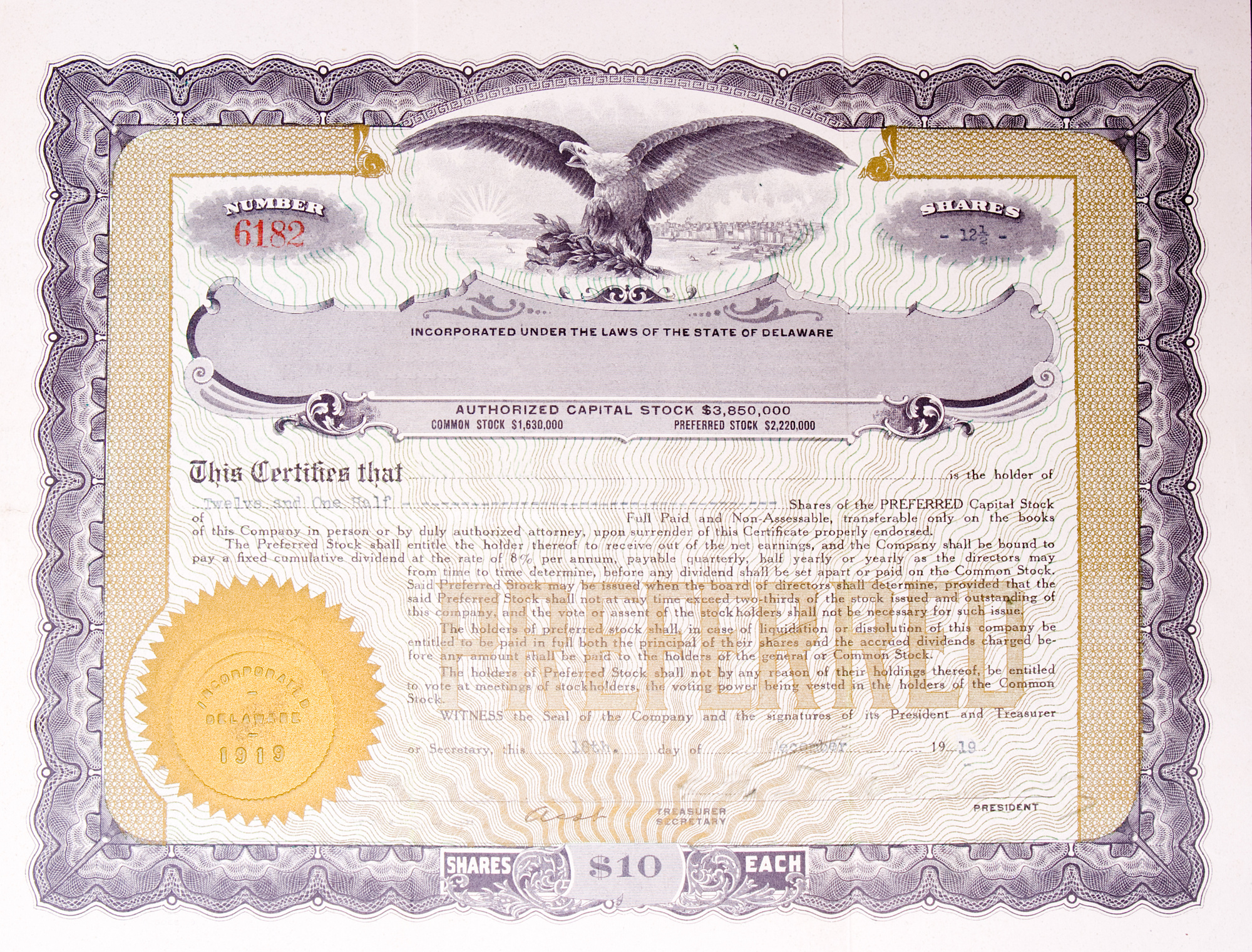8th Jan 2019
Mature Money: How to Tell if Old Stock Certificates are Worth Anything

There were five securities that were a part of the first securities agreement that would eventually one day become the New York Stock exchange. The first stock traded was for the Bank of New York in 1792.
These days we don't use paper to signify our stock ownership. Trading is done electronically. However, it isn't uncommon for people to find old stocks hidden away in places like an attic.
Not everyone practiced proper procedures for storing their important documents safely. This resulted in people forgetting about their old stock certificates over the years.
If you've stumbled upon some old stock certificates, you may be wondering if they are worth anything. Keep reading to find out!
Does the Company Exist?
When you find old stocks, the first thing you need to do is find out if the company still exists. If the company doesn't exist, it most likely is worth nothing as a security.
But don't give up all hope just yet. It may be worth something as a collectible. There is a whole community of people who collect old stocks.
Not just any stocks are collected though. They are valuable because of their design or quality. Or they could be worth something because of the person who signed or owned them. You may also find someone who wants them purely for the history of them.
The Company Exists
There are a few places that you can look up stocks to determine if the company exists. Try the Over the Counter Bulletin Board, or the OTC Markets.
Many companies are bought, sold, and merged. Because of this, you may find that the name you are looking for is different from the original company when the stock was bought.
If you find that there is a company in existence today, your stock may be worth something.
Contact the Transfer Agent
Once you find out the information for the modern day entity of the issuing corporation, you can look up the transfer agent. The agent will explain all of the changes in corporate ownership.
They will then be able to explain what all of those changes mean for you and your class of stock. If there is money for you, they will notify you as you need to cash out your old paper certificates.
You may find that the stock certificate states you own something completely different from what you actually own today. This is because stocks will split, or get reclassified, or acquired.
The stock agent should be able to send you an updated and correct stock certificate for the company your stocks are in. Be prepared for this process to take a long time, weeks or even months.
They Are in Paper Form
These days the stocks we own are traded so quickly that they are no longer in paper form. This wasn't always the case though.
The original stocks were printed on paper and often used as a form of currency. Their printing was a closely guarded secret and there were only three companies in the United States that were authorized to print them.
CUSIP Number
Check your paper certificate for a CUSIP number. This is the identifying number that must be on all paper certificates. You can use this number to check with the secretary of state's office in the state of the company's incorporation.
They will be able to tell you information about the company. This would include if the company changed its name, moved out of state, or went out of business.
Prepare to Prove You Own It
When you go to cash in your certificates, you will need to show proof of ownership. This could be as simple as showing a death certificate and probated will.
Other times it may be more complicated and require you to hire an attorney. If you are unsure of your situation, it is best to hire an expert to advise you.
When proving that you own the stock, you need to start with the owner's name that is listed on the stock. Now work your way backward to trace the ownership.
Depending on how old the stock is, this could be as simple as starting with a parent. It could go back further though, and that's when things get confusing.
Transfer Your Stock
If you take a look at the back of your stock you will see an ownership transfer form. You will need to fill this out in the presence of a notary.
Once you have the formed completed, send it to the transfer agent. It is best to send proof of your right to claim ownership of the stock with it. You should also mail it with tracking or certified.
Place Your Sale Order
Once you send in the stock and proof of ownership, sit back and wait for the transfer agent to tell you that you are registered as the owner officially.
When it is on record that you own the stock, then you can put in a request to sell the stock with the transfer agent or your broker.
Scripophily
If the company no longer exists at all, don't lose hope! You may find that your stock is valuable as a collectible. In the last twenty years or so people have begun to collect stock certificates that are for companies that are no longer in existence.
Some collectors want the certificates for their artistic beauty. Others like collecting them for their historical significance or the company's story.
Industry Booms
Before the Dotcom boom, we are all familiar with, there have been many booms in different industries throughout American history. There was the Telephone boom of the 90s, airlines in the 70s, and the automobile industry at the turn of the century.
Before that was the telegraph, railroad, and oil booms. If you have stock from busted companies during these booms they may be worth more. This is mainly because they are a part of a significant time in history.
Age of Your Certificate
Generally, the older the certificate, the more it is worth. This isn't always the case though.
Condition
There is a grading scale that is used for coins and stamps that can be applied to stocks. But most hobby collectors don't use it though.
- Poor: There is staining, heavy wear, and damage
- Fair: There is strong wear and evidence of use
- Fine: The stock is creased and has some wear
- Very Fine: It only has some minor signs of wear
- Extremely Fine: Only slight traces of wear
- Uncirculated: This is the most pristine condition, there are no creases, folds, stains, wear, or markings.
Signatures
Did anyone famous or of importance sign the stock? How about the owner's name, was it issued to anyone famous or a well-known company today?
Rarity
As with any collectible, the more prevalent it is, the less valuable it will be. For stocks, you need to look at how many were issued and how many have survived over the years.
Aesthetics
Often old stock certificates are looked at more like a work of art and less as the bearer paper they once were. So how intricate and artistic is your certificate?
Look around the outside for fancy scrollwork and borders. What are the colors of the ink there were used?
The way the certificate was made will make a difference too. There were many different methods used including a preprinted form, lithograph, wood engraving, and steel engraving.
Some stocks were even created by hand. Certificates there were actually printed and issued are worth more than those that were the printer's specimen.
Finally, another defining characteristic is the paper used. How has the paper held up over time? Can you tell if the paper was high or low quality?
You may even be able to find a watermark. This was the original method for preventing counterfeit stocks.
How Much Are Your Old Stock Certificates Worth?
So the next time you are digging around in grandma's attic and find some old stock certificates, don't just throw them away! Do a little investigation and find out if the company is alive and running today.
If it is, you may be able to cash them out for a profit. If not, you may find a collector who is interested in them.
Whatever you ultimately decide, make sure you don't lose your old stock certificates by storing them properly. This will help keep them safe and retain their value.
Have a company or LLC you want to issue stock for? We have a large collection of stock certificate templates you can fill out.




